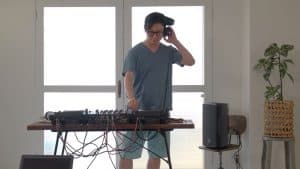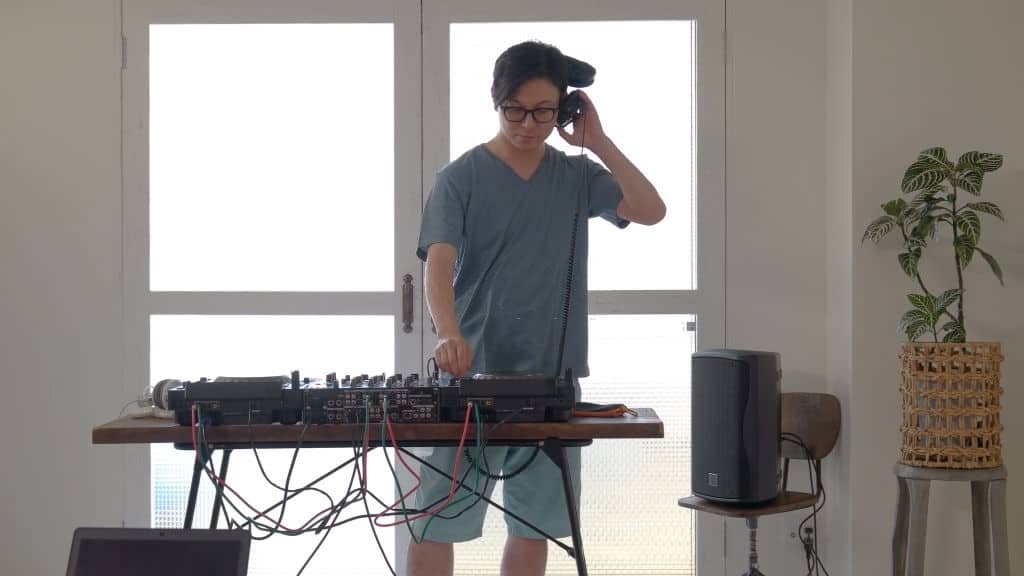
How to Get Started
Some people think that DJing is quite easy because they see some low-level DJs press play on a laptop and believe that every other DJ does that. That couldn’t be any further from the truth, mixing like a professional DJ takes a lot of time and effort. For those that understand how hard it is to be a DJ, but they want to learn nonetheless, here are some things to help you start your journey.
Talk to Other DJs
The first thing, even before you consider the type of DJ, the equipment, and so on, is to talk to other DJs – both ones you admire and the ones you don’t follow. You can learn a lot from a simple conversation, and most are more than willing to help an enthusiast. Read a variety of interviews if you can’t get to them one on one, and be open to any ideas and suggestions they put your way. Just as DJing has evolved, you as a budding DJ must be as flexible and open to new input.
The Different Types of DJ
As stated above, DJing has evolved into something quite big, and for that reason, there are many kinds of DJs and most have their roots with the high fusion electronic DJ.
- Turntablist – These DJs show their mastery and skills behind the decks. Crowds are impressed with the clever transitions, and impressive tricks that they can perform.
- The Club DJ – They are a completely different breed because they have a completely different audience and reputation. People that go to the clubs, usually want dance music that will hype them up, so the club DJ needs to know how to read the crowd and play the kind of music that they will want.
- The Radio DJ – DJing in the radios can vary from full music curation to only playing bits of music.
- The Mobile DJ – These DJs will perform at your wedding, and they are usually in charge of almost everything. From setting the equipment, managing the crowd, planning the show, and also making announcements.
- Producers – Many people confuse producers with DJs, while DJing means playing music that has already been recorded, a producer creates original music. However, sometimes, they are the same person, but that isn’t always the case.
Set Up Your Goals
If you’re doing this just for fun, then it will be an excellent hobby for you, and you can learn plenty of things with which you can impress your friends. While if you’re thinking a professional DJ then you must know it takes extreme amounts of dedication and time to reach where you want to be, and even if you do everything right, you can still fail if you don’t have any luck. All the famous DJs that we see now earning millions of dollars were lucky to get a break.
Learn the Software
It’s time to start learning something about software and getting a general idea of what DJing means.
The three leading platforms are:
- Traktor Pro – This is a native instruments software that supports an abundance of performance features, and it’s great for hip hop and EDM DJs. The software itself costs $99, but you can learn plenty of things by the demo that you can get for free.
- Rekordbox – The free music management software by Pioneer lets you prepare your library and then export it on a USB, or you can directly play it from your laptop.
- Serato DJ Pro – This is one of the most popular software out there, and it’s excellent for any rookies out there that want to learn more.
It’s essential to note that these aren’t the only three options out there since you can find plenty of other great software to hone your DJing skills. Virtual DJ is one of the most downloaded software on Earth, and there are plenty of good reasons for that because it’s free for home use, it is entirely backed by a vast community, and it also supports the latest tech required for DJing.
Basic DJ Skills
The most basic skills of DJing are EQing, phrasing, prep, mixing, and beatmatching. Below you can get a general idea as to what they are.
- EQ – Also known as equalizing is the act of cutting or boosting frequencies to blend multiple audio tracks nicely. In dance music, the majority of the audio space is consumed by the lower frequencies (bass), so it’s not preferred to mix loud kick drums one over the other because they are too loud to combine. Mixers usually have a 3-band EQ (bass, midrange, treble, or low, mid, and high). EQ is an essential tool for every serious DJ since it gives them plenty of creative freedom.
- Phrasing – Not to confuse it with Phasing is the act of mixing tracks at points where it makes the most sense. Most of the music that you will DJ is in 4/4 time; this means that in a measure bar, there are four beats.
- Gain Control – Every DJ rig out there has the levels of volume adjustment option. Through the help of a gain knob, you can adjust the level of each channel, and it’s important to note that every channel also has a line fader.
- Beatmatching – The idea behind beatmatching is to have the same tempo playing for two tracks. Tempo is the speed of the song being played, while Phase are the beats of both tracks that are playing at the same time. To adjust the tempo, you will need a pitch fader and pitch-bend button, jog wheel to adjust the phase. While nowadays this is rendered obsolete because many hardware and software DJ packages have a built-in sync functionality. There is a little debate as to if you even need to learn this skill. However, before deciding to entirely scrap it off your list, by learning how to do this, you will help tune and develop your ears.
Devices
While it’s vital to learn the theoretical side of how things work, you need to get familiar with the setup that you will need to play and create music. Buying the first setup can be a tough task for every aspiring DJ because there are so many options, and also there are so many things that you need to consider before buying one. For example, the Turntable DJ setup and all computer DJ setup are completely different, so it’s important to know what kind of DJ you’re aspiring to be so that you won’t buy unnecessary equipment. Having The Best Devices to Play Electronic Music doesn’t mean that they are also the best devices to play hip hop music on.
- Turntable DJ Setup – For this setup to be complete you will need a DJ mixer, two turntables, two cartridges, slipmats, vinyl records, RCA cable which connects the mixer to audio output. Last but not least, you will want to have some great DJ headphones, and if you think that these noise-canceling headphones need more power, you should look at getting headphone amplifiers. Also, make sure to check out Bluetooth turntables. The turntable DJ Setup that uses a DJ software needs all of the above equipment and a computer, as well as a DJ interface package.
- CDJ DJ Setup – You will need a DJ mixer, two CD DJ turntables, headphones, and MP3s. While the CD DJ Setup with DJ software needs a computer and a DJ interface package.
- DJ Controller Setup – You’re going to need a computer, a DJ software and a DJ controller for this one.
- All computer DJ Setup – A computer is required, as well as a DJ interface, while an audio interface is preferred but not necessarily required.
